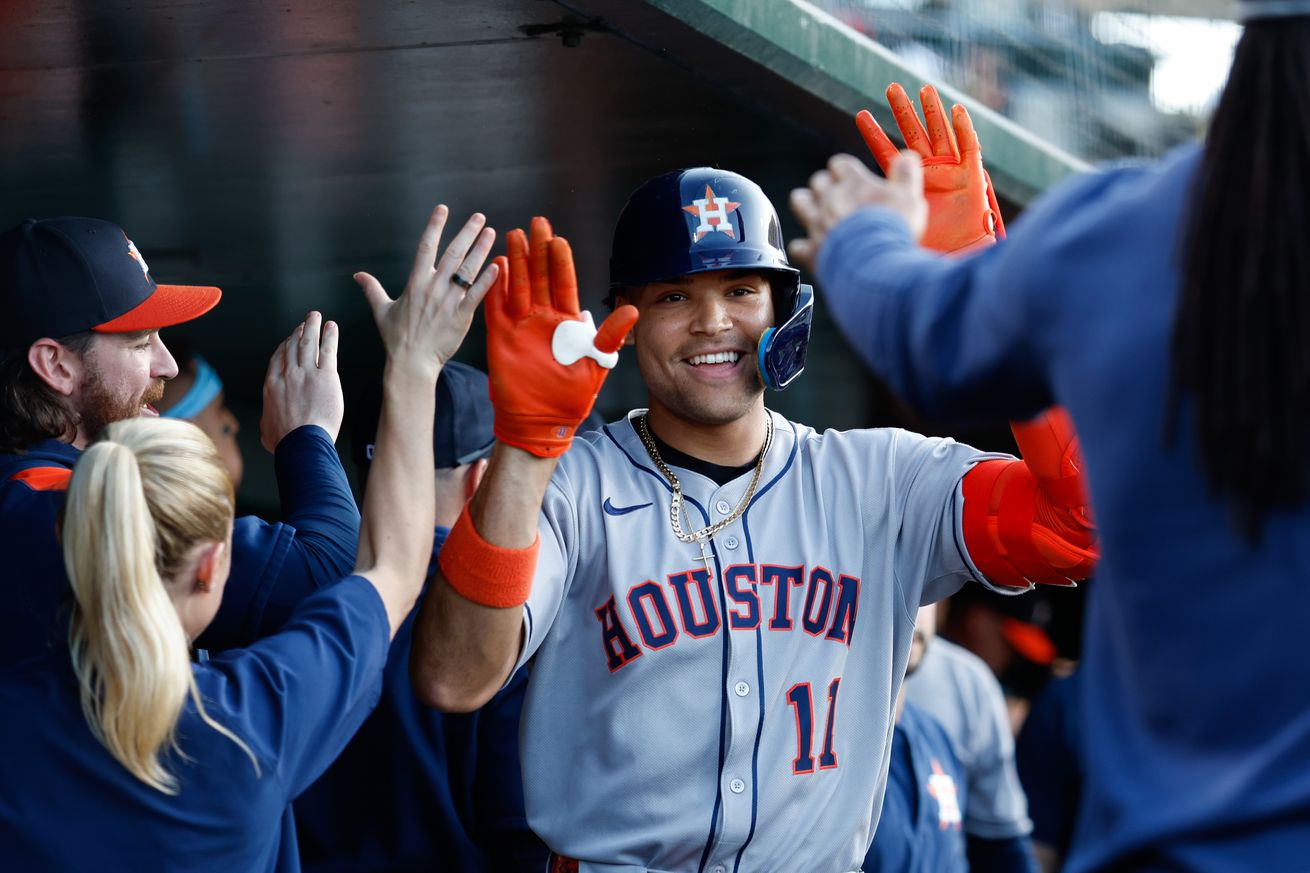
Comparing the rookie to another young outfielder
I make no bones about the fact that I am often a buzzkill. I certainly have gotten that reputation on our sister site at Battle Red Blog. I certainly don’t go out of my way to be negative, but I guess as an analyst I tend towards the critical. Every once in awhile it is a good idea to shake things up and come out with somenin positive stories. I really do love the game and want that to get out.
At the beginning of the year, the debate was around whether Cam Smith was being called up too soon. Were the Astros ruining his development by accelerating his development. Unfortunately, life is not a choose your own adventure book. You can’t go back and know whether he would have been even better in 2026 with another season in the minors. However, we can assess whether he belongs based on the the return from first 70+ games.
What I thought I would do is compare him to a 2024 rookie outfielder with a limited minor league profile. Wyatt Langford had more minor league time than Smith, but he was a first round pick with a sparkling college career, so the two were very similar in terms of their prospect profile. How is Smith’s rookie season measuring up? As per usual, we will have to go beyond the standard numbers and dig a little deeper.
It should be noted that these were the numbers coming into Wednesday’s game. The problem with analysis in season is that you are always dealing with a moving target. A sudden big game or a couple of 0 for 4s and the numbers can look a little different. That being said, the basic numbers would indicate that Smith has been better than Langford was so far.
However, that last number is a bit troubling. The .361 BABIP is not sustainable and the rate for Langford is pretty close to the league average, so we can expect some regression for Smith there. However, through 70+ games we can clearly see that he belongs at the big league level. At least, it is hard to imagine anyone in the organization doing a better job in right field.
Of course, the basic numbers only tell part of the tale. I like to look at what I like to call process data. In other words, we look at what the player can control. Strikeout rates and walk rates fit in here. Contact rates, hard hit rates, and chase rates do as well. Let’s see what happens when we look at those.
A part of this is easy to interpret because you are comparing two players. Still, these numbers deserve some context. We noticed that Langford had a higher isolated power number, but Smith is hitting more balls hard. I do expect some BABIP regression, but maybe not as much as people might think. Harder hit balls become hits more often. So, Smith might settle in at around .320 or .330 in terms of BABIP.
However, hard hit balls usually turn into extra base hits more often as well. So, I would expect the power numbers to go up even if the batting average drops. The biggest key for Smith moving forward will be the contact rate. There is just more swing and miss there. Yes, Langford has a lower chase rate, but that is where some added context is needed. The league average is closer to 30 percent there, so Smith is still better than most at not chasing balls out of the zone.
The question will be whether he is able to show growth between now and the end of the season in his ability to make contact. If he is able to do that then the predicted regression in BABIP won’t sting quite as much. Add that to a predictable uptick in power and he could end the year with better overall numbers than he has right now.
Langford is a left fielder while Smith is a right fielder, but they are very similar players in terms of value. If you prorate his WAR numbers and defensive numbers into 162 games then Smith ends up right around equal to what Langford did during his rookie season. So, depending on the source, Langford was either a three win player or a four win player. Neither of those grow on trees.
He has taken another step as a player this season. If Smith and Langford are similar players then that might be in Smith’s future. Like was said at the beginning, goodness knows what would have happened if Smith had begun the year in the minors. Maybe he would have broken out if he came up midseason or at the beginning of 2026. He certainly isn’t a part of the rookie of the year conversation yet, but a hot month or two could get him in that conversation.